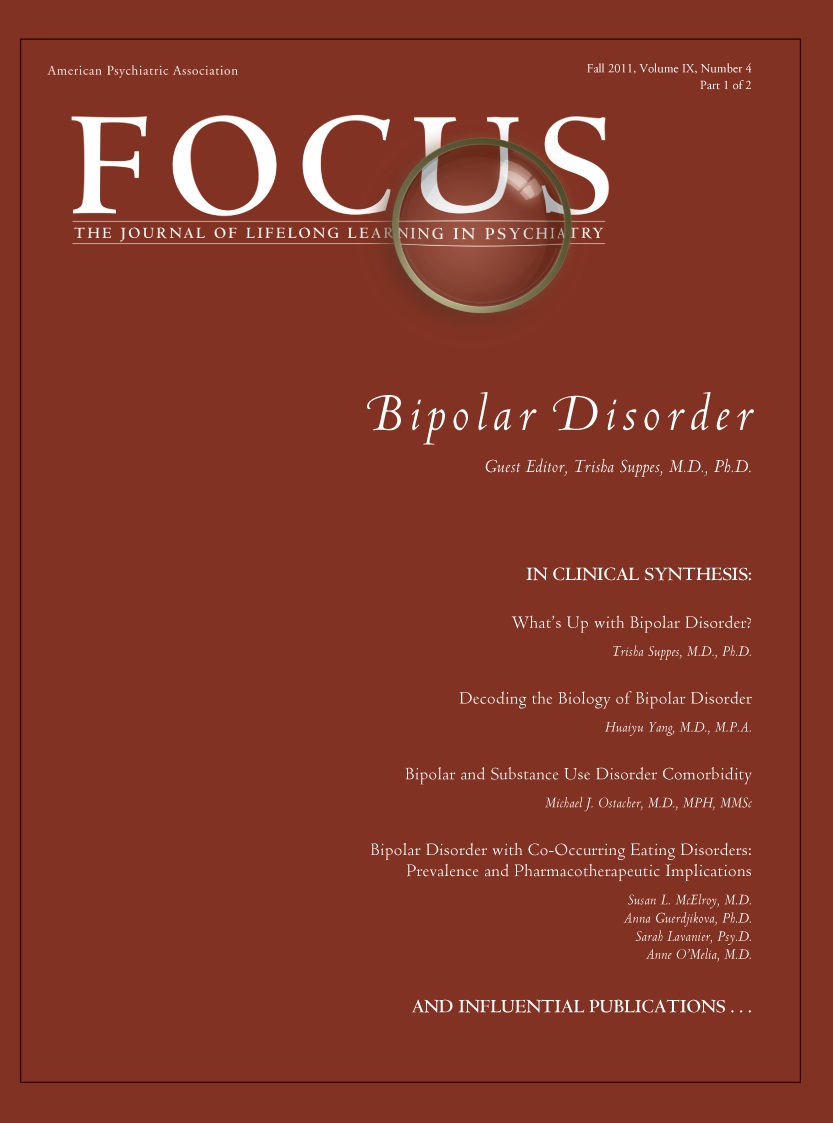Ask the Expert: Bipolar Disorder
A 30-year-old businesswoman sought consultation for persistent depressive symptoms and increased irritability despite ongoing antidepressant (venlafaxine 300 mg) and mood stabilization (divalproex sodium 1000 mg) cotherapy. She had been treated with divalproex since her first and only admission 10 years ago for nonpsychotic mixed mania complicated by alcohol abuse and migraine. Her current symptoms include depressed mood, anhedonia, guilty ruminations, early morning awakening with reduced appetite, and weight loss. In addition, she reports irritability, racing thoughts, distractibility, and an uncomfortable energy that she describes as “pushed, hyperactive, wired and tired.” All these symptoms were present despite a therapeutic level of valproate (60 mcg/dl). The addition of venlafaxine has reduced the symptom severity of depression and anhedonia by 50% but the irritability, racing thoughts, and agitation have increased.
References
Information & Authors
Information
Published In
History
Authors
Funding Information
Metrics & Citations
Metrics
Citations
Export Citations
If you have the appropriate software installed, you can download article citation data to the citation manager of your choice. Simply select your manager software from the list below and click Download.
For more information or tips please see 'Downloading to a citation manager' in the Help menu.
View Options
View options
PDF/EPUB
View PDF/EPUBGet Access
Login options
Already a subscriber? Access your subscription through your login credentials or your institution for full access to this article.
Personal login Institutional Login Open Athens loginNot a subscriber?
PsychiatryOnline subscription options offer access to the DSM-5-TR® library, books, journals, CME, and patient resources. This all-in-one virtual library provides psychiatrists and mental health professionals with key resources for diagnosis, treatment, research, and professional development.
Need more help? PsychiatryOnline Customer Service may be reached by emailing [email protected] or by calling 800-368-5777 (in the U.S.) or 703-907-7322 (outside the U.S.).

